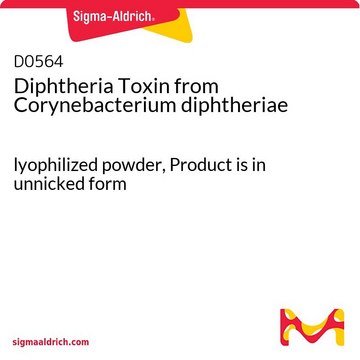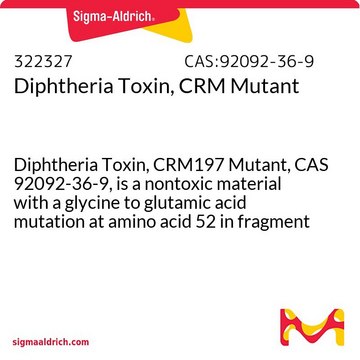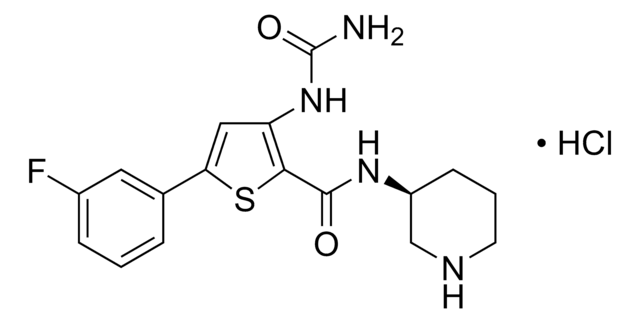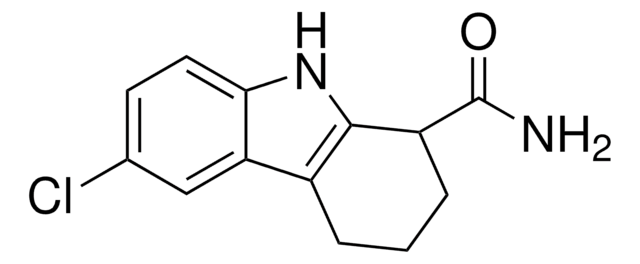322326
Diphtheria Toxin, Unnicked
from Corynebacterium diphtheriae, Major band under reduced conditions (SDS-PAGE), <15% nicking, solid, protein synthesis inhibitor, Calbiochem®
Synonim(y):
DTx
About This Item
Polecane produkty
product name
Diphtheria Toxin, Unnicked, Corynebacterium diphtheriae, Diphtheria toxin catalyzes ADP-ribosylation of eukaryotic aminoacyltransferase II (EF2) using NAD as substrate. Activation requires nicking with a protease followed by reduction with DTT.
Poziom jakości
Postać
solid
producent / nazwa handlowa
Calbiochem®
warunki przechowywania
OK to freeze
Warunki transportu
ambient
temp. przechowywania
2-8°C
Opis ogólny
Zastosowanie
Działania biochem./fizjol.
Eukaryotic aminoacyltransferase II (EF2)
Ostrzeżenie
Postać fizyczna
Rekonstytucja
Komentarz do analizy
Inne uwagi
Informacje prawne
Hasło ostrzegawcze
Danger
Zwroty wskazujące rodzaj zagrożenia
Zwroty wskazujące środki ostrożności
Klasyfikacja zagrożeń
Acute Tox. 1 Inhalation - Acute Tox. 1 Oral
Kod klasy składowania
6.1A - Combustible acute toxic Cat. 1 and 2 / very toxic hazardous materials
Klasa zagrożenia wodnego (WGK)
WGK 3
Temperatura zapłonu (°F)
Not applicable
Temperatura zapłonu (°C)
Not applicable
Certyfikaty analizy (CoA)
Poszukaj Certyfikaty analizy (CoA), wpisując numer partii/serii produktów. Numery serii i partii można znaleźć na etykiecie produktu po słowach „seria” lub „partia”.
Masz już ten produkt?
Dokumenty związane z niedawno zakupionymi produktami zostały zamieszczone w Bibliotece dokumentów.
Nasz zespół naukowców ma doświadczenie we wszystkich obszarach badań, w tym w naukach przyrodniczych, materiałoznawstwie, syntezie chemicznej, chromatografii, analityce i wielu innych dziedzinach.
Skontaktuj się z zespołem ds. pomocy technicznej









